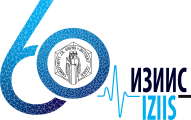Since its establishment in 1965, the activities of the Institute of Earthquake Engineering and Engineering Seismology (IZIIS) have been directed toward reduction of disaster risks, i.e., protection of population and material goods, reduction of physical and economic losses and protection of social-economic systems against the effects of earthquakes and other natural disasters. All activities of IZIIS have been in the domain of preparation of the system and consistent legislation as well as creation of highly professional human resources and building capacities for a seismically resilient society.
In accordance with the strategic orientation and the mandate of the Institute, its main activities can be summarized into the following categories:
- Scientific-research, educational, applicative, development and publishing activity in the following fields:
- Earthquake engineering
- Engineering Seismology
- Design of seismically resistant structures
- Diagnosis, repair, strengthening, reconstruction of existing structures or earthquake-damaged structures and systems
- Development, physical and urban plans for providing an environment with an acceptable level of seismic risk and special site surveys for detailed urban planning and capital investments
- Evaluation of risks related to occurrence of geotechnical hazards
- Dynamic resistance of mechanical, electrical and other technological elements and systems
- Prevention of earthquake disasters, planning measures for mitigation and preparedness
- Development of programmes and strategies for building a seismically resilient society
- Assistance to governments and organizations in mitigation of earthquake consequences and in the process of recovery involving assessment of post-earthquake needs, analysis of damages, assessment of physical, functional and economic losses and social effects as well as planning measures and activities for initial response, rebuilding and seismic protection of the region struck by an earthquake.
- Development and improvement of technical regulations, standards and procedures of design through a leading role or participation in elaboration of:
- Studies for seismic zoning and microzoning
- Development and improvement of seismic regulations for newly designed structures, protocols for repair and strengthening of buildings and engineering structures damaged by an earthquake and related standards, including also the European regulations on design of seismically resistant structures
- Assistance to the construction industry in the domain of seismically safe design, construction, revision and supervision of important structures and capital investments
- Continuous participation, through own experts in different fields (concrete, masonry structures, steel structures, geotechnics, earthquake engineering) in the work of technical committees within the frames of the Standardization Institute for the purpose of providing strong support to the process of adoption and implementation of the Eurocodes as national design standards
- Laboratory and field investigations aimed at definition of the technical basis of seismic risk reduction referring to application and development of experimental methods and techniques for testing the behavior of structures exposed to earthquakes, explosions, wind and other static and dynamic loads; field and laboratory experimental testing of structural elements and shaking table tests on physical models of structures and tests on geomodels.
- Seismic monitoring and probabilistic assessment, involving:
- Strong motion network
- Integrated 3D strong motion network
- Deterministic and probabilistic assessment of seismic hazard, vulnerability and risk
- Raising public awareness and improvement of preparedness of the population to respond to conditions of earthquakes and other disasters through organization of international conferences, numerous training courses and workshops.
